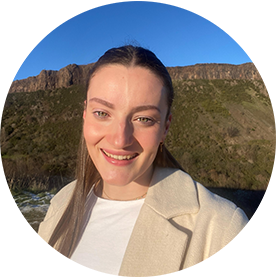Katie Robertson is an aspiring neuroscientist and an international-grade swimmer.
Currently in her third-year at the University of Edinburgh, the busy Neuroscience student had spent the first two years of her degree completing virtual physiology labs off-campus due to the COVID-19 pandemic.
In 2022, she was able to spend two weeks in the lab designing her own experiments in Lt as part of a summer internship with the University's Biomedical Teaching Organisation.
We caught up with Katie to learn about how she used Lt and virtual reality to create her own interactive physiology experiments, and to get a student’s perspective on how technology can be used in the classroom.
A passion for the brain
Growing up in a family that was deeply immersed in science, Katie was always interested in biology, particularly the human brain. “I've always just really been fascinated by the brain and how it works. I remember at school, any time we’d start a new year, I'd always ask my biology teacher, ‘Is there anything about the brain in this curriculum?’, and the majority of the time, the answer would be, ‘No’. I was always so interested in how the brain works, so I applied to study neuroscience, [and] I’m enjoying it a lot.”
Despite being a full-time university student, Katie also competes at an international level in swimming, which has helped to hone her scientific thinking abilities. “Swimming has really brought out an analytical side to me. Performing at a high level - you need to really look for marginal gains, and how to improve. And obviously with swimming comes an understanding of physiology.”
Katie’s interest in physiology and the brain exists alongside a fascination with technology: “I'm such a firm believer that the biggest advances in science are going to come from advances in technology, so I think that's something that I've just been drawn to.”
Finally getting hands-on in the lab with Lt
For the first two years of her degree, Katie and her fellow Neuroscience students were completing physiology labs remotely in Lt using pre-recorded data. When the opportunity came to test the capabilities of Lt in the lab, Katie was keen to finally gain some hands-on experience.
This short internship programme attracted lots of applications, and involved a small team of students working together over the summer to test pre-existing Lt practicals, before being given free rein to design their own protocols.
The lab protocols incorporated Lt Sensors: these plug-and-play USB sensors sample a wide range of physiological signals, meaning that Katie could gain experience collecting and interpreting electrocardiography (ECG), electrooculography (EOC), electroencephalography (EEG), respiratory, and cardiac data.
Related: Learn more about Lt Sensors »
After two years of completing virtual laboratories, these sessions allowed Katie to engage with authentic data in the lab.
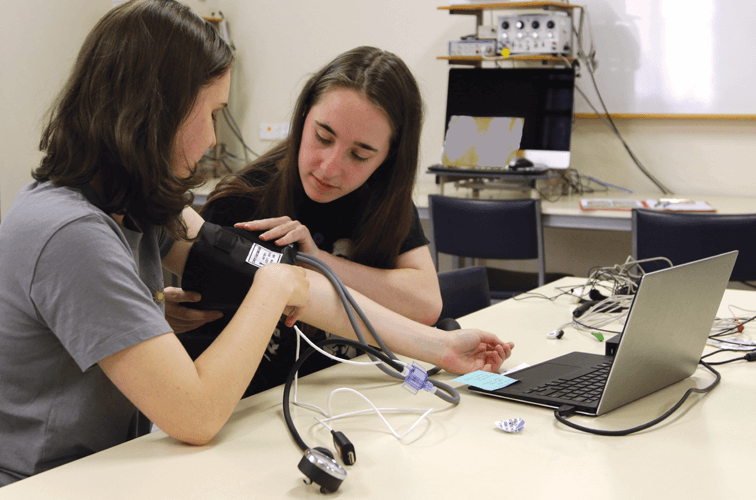
Lt Sensors are simple plug-and-play USB devices that make physiological data collection easy.
"When we're recording our own data, we obviously pick up some issues in our own experimental setup, so if our results aren’t what we expect, then we know that there is a problem somewhere."
In the second week of the internship, the students designed and built their own physiology experiments based on personal areas of interest: “We got to design our own experiments, and make a practical lesson as if we were directing that lesson toward fellow students.” Katie had been listening to the Huberman Lab podcast over lockdown, and was inspired by these scientists to investigate autonomic nervous system activation in response to visually-evoked threats and various breathing patterns.
“[Huberman] spoke a lot about the effects of visual threats on nervous system activation, and also a physiological sigh, where you inhale quickly through the nose two times, and then have a long, deep exhale through the mouth. I wanted to take those concepts into Lt, and see if it was possible to use.”
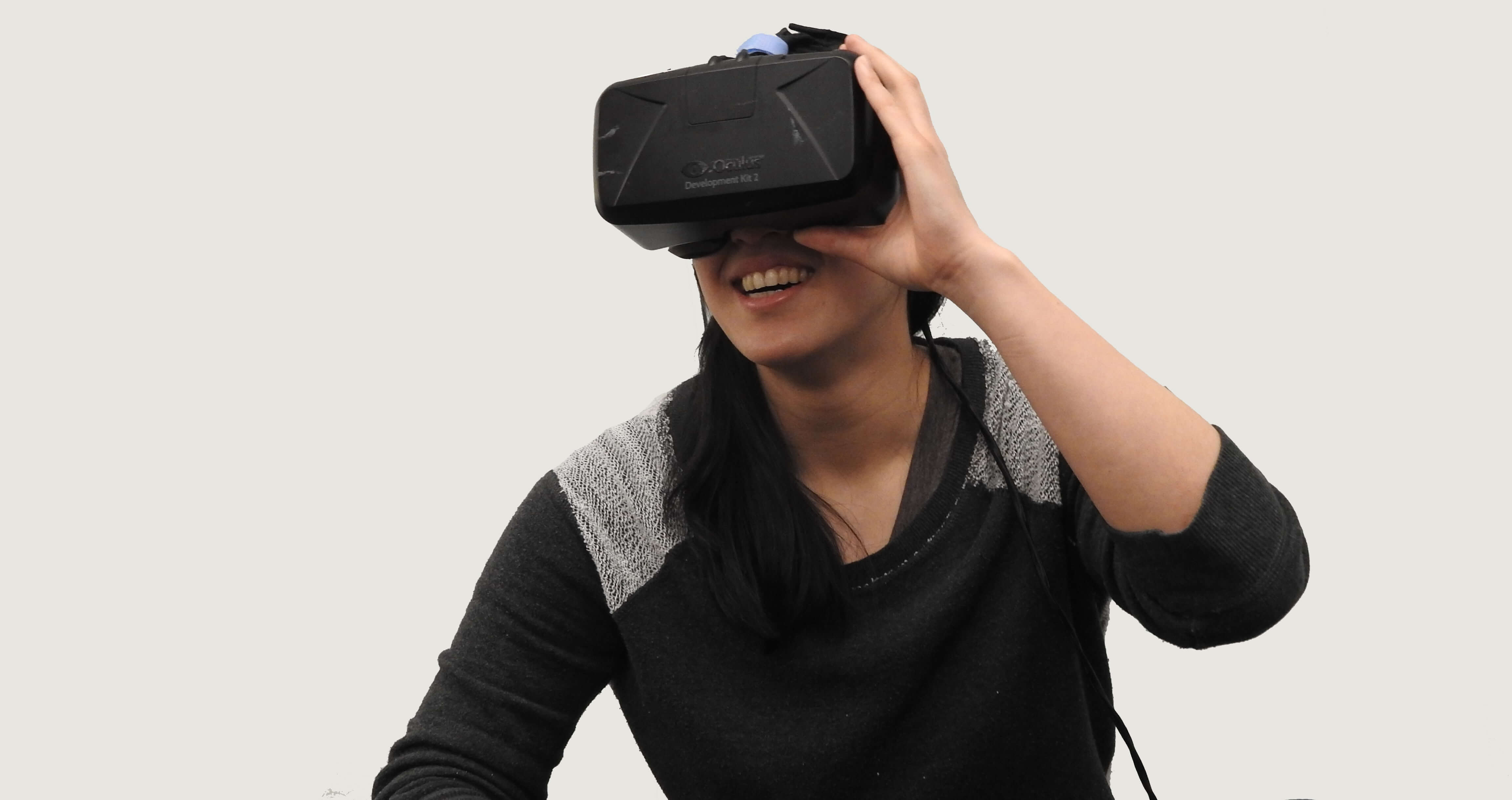
By combining Lt Sensors with a simple VR headset, Katie could test physiological responses to startling stimuli.
“So my practical [experiments] tested the effects of visual threats on the activation of the sympathetic nervous system, while the breathing protocol tested the activation of the parasympathetic nervous system.”
By using a virtual reality (VR) headset alongside Lt Sensors that measured ECG, EOG, finger pulse, and respiratory rate, Katie was able to produce her expected results, saying, “the Lt platform provided a simple way to obtain a practical understanding of fascinating, yet complex, physiology.”
Related: Human Physiology Collection in Lt »
Other interns created an experiment testing the effect of music on physiological responses, while another group designed a medical scenario where a range of Lt Sensors were used to track different physiological variables. Students were then required to analyze these measurements to come up with a diagnosis.
“We really liked that the sensors can be used simultaneously with each other. So you can [measure] heart rate in conjunction with electrooculography, for example, and the use of the sensors themselves is very simple."
"Lt makes [data analysis] so simple so that you can really focus on the important aspects and not the little intricate details of whether you're getting a marker in the right place.”
Learn more about the Lt Sensors Breathing Lab in this walkthrough with Senior Instructional Designer, Tim.
While Katie and her peers had used Lt as students for some years prior to this experience, this was their first time interacting with the authoring interface.
“Obviously we do use Lt a lot from the learning side, but creating lessons, we had never done that before until the internship, and it didn't take long to get to grips with it at all. I think every day that we went into the lab we were discovering something else that we could do with it, and just passing it on to each other.”
Why is it so important for science students to have hands-on lab experiences?
As a student who was unable to take part in lab practicals for the first two years of her degree due to the COVID-19 pandemic, Katie highlights the importance of these hands-on experiences for undergraduate science students:
“Science is just unanswered questions. So you need to have a critical mind, a creative mind, and have lots of critical thinking. In terms of having hands-on experience, finding out what doesn't work in an experiment is just as important as finding out what does work. And you can’t get that just from reading the theory of what does work.”
“Learning through practical experience accelerates learning, at least for me. I find, if I actually get to practice what I'm learning, or do it myself, then I find I understand it a lot better. I think it's essential to students as well, especially if they are going to pursue a career in science or research.”
There are also benefits to having students not only come into the lab and complete ready-made protocols, but giving them the opportunity to create their own, Katie says.
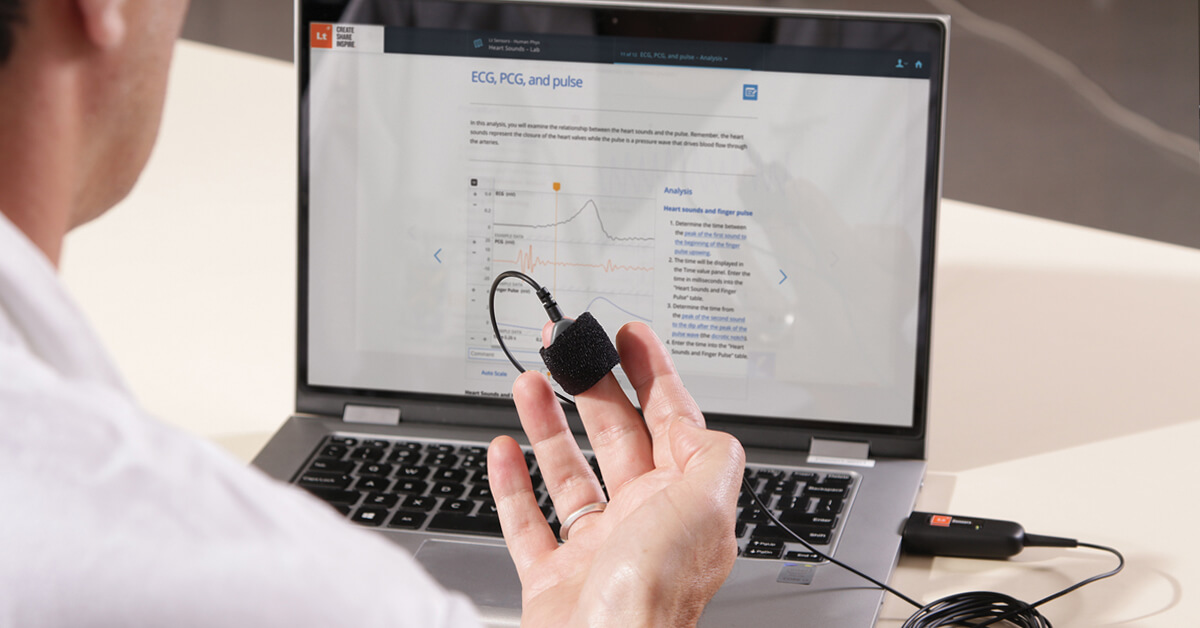
Lt Sensors allow students to record their own
and others’ physiological variables.
The internship experience “really shows that students do think outside the box and if they're given the opportunity to create their own experiments, then they can think of things that others, including educators, might not have thought of before.”
Do you have any advice for educators looking to use technology in their teaching?
1. Become comfortable with using technology
Katie believes it’s important to incorporate technology into undergraduate teaching, especially when teaching a generation “where we’ve all grown up with phones."
She recommends that educators “use [technology] as much as you can…if students are getting familiar with technology as they're going through their studies, when they are scientists themselves [they won’t be] out of their depth.”
Katie points out benefits for the educators, too. “For educators, it can save them a lot of time - if they have lessons created, using Lt as an example, then that's something they've got in the bag; they don't have to keep working each year, they can just publish that lesson.”
Related: Preview the Muscle and EMG Lab »
2. Provide revision opportunities for students outside the lab
Lt can be used as a revision tool outside the lab, a feature Katie is familiar with:
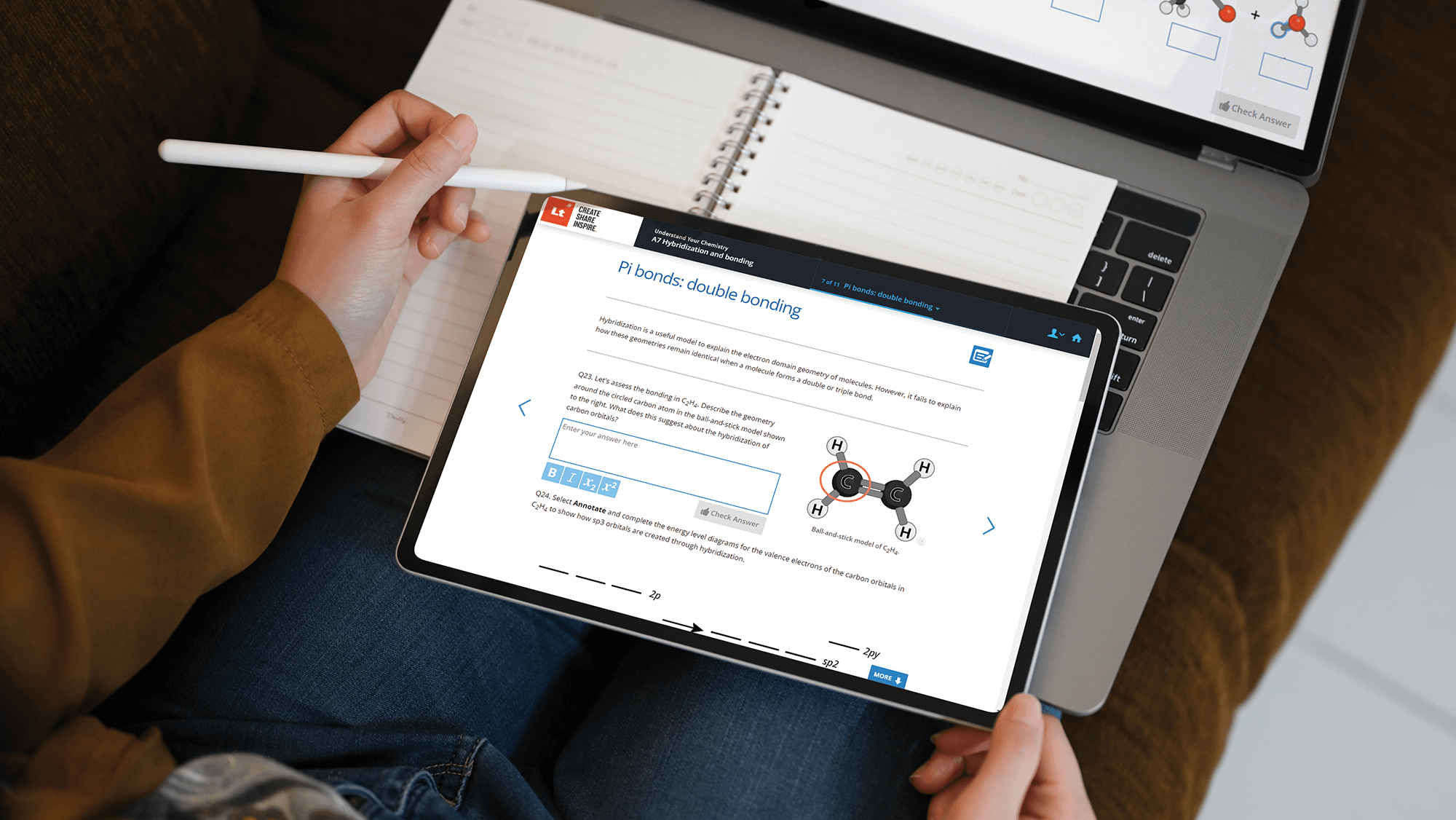
Online labs are accessible from anywhere there is an internet connection, so students can access them before and after the hands-on session.
“In my first- and second-year I used Lt so much in my revision, because I always had access to the practicals that I'd done previously throughout the year, and I would go back and redo all of the questions.”
Katie recommends that educators create an Lt lesson specifically for revision in each course - they can adapt this year-on-year, and students can use the lesson “to learn and revise for exams with all the multiple-choice questions and just getting practical knowledge.”
After her internship experience, she is confident that educators would be able to find students who could help to create these resources. She says, “As we showed in our internship, they'll probably find a lot of really enthusiastic students that could do it for them.”
“The more lessons that are on [Lt], the more that you can study, the more that you can learn.”
3. Empower students to design their own experiments
The lessons Katie and her peers created during the programme have been saved on the Lt platform, and are ready to be used by other students in the future. She recommends that students are given more autonomy to explore their own interests:
“For example, my supervisor, Dr. Céline Caquineau, had the idea that a lecturer could share an example of a lesson in an open lab space, and students could go in and branch out from that lesson."
"They can do the basics of it, but they could add more to it from what their interests are and what they want to test…it just really helps [you] to understand why you're getting the results, and I think that's such an important thing to be able to do.”
After her internship experience with Lt, Katie is looking forward to a future studying the brain.
"I think [Lt is] such a good software. I've really enjoyed using it. A lot of the time practicals can be quite draining - sometimes you're in there for 3 hours plus, non-stop, just working. I think Lt makes it very, very simple and a very enjoyable experience as well.”
Enjoyed this story? Learn how Wendy Riggs, Associate Professor at the College of the Redwoods, used Lt Sensors to teach physiology during the pandemic, or hear another student's perspective: What’s it like to use Lt as a student? “It gave us a more in-depth understanding”.
Katie Robertson,
Third-year Neuroscience student,
University of Edinburgh.
A full-time student and performance swimmer, Katie was a Biomedical Science Intern during the Summer of 2022 with the Biomedical Teaching Organization at the University of Edinburgh, using Lt and Lt Sensors to validate existing lab protocols and to create her own physiological experiments.

